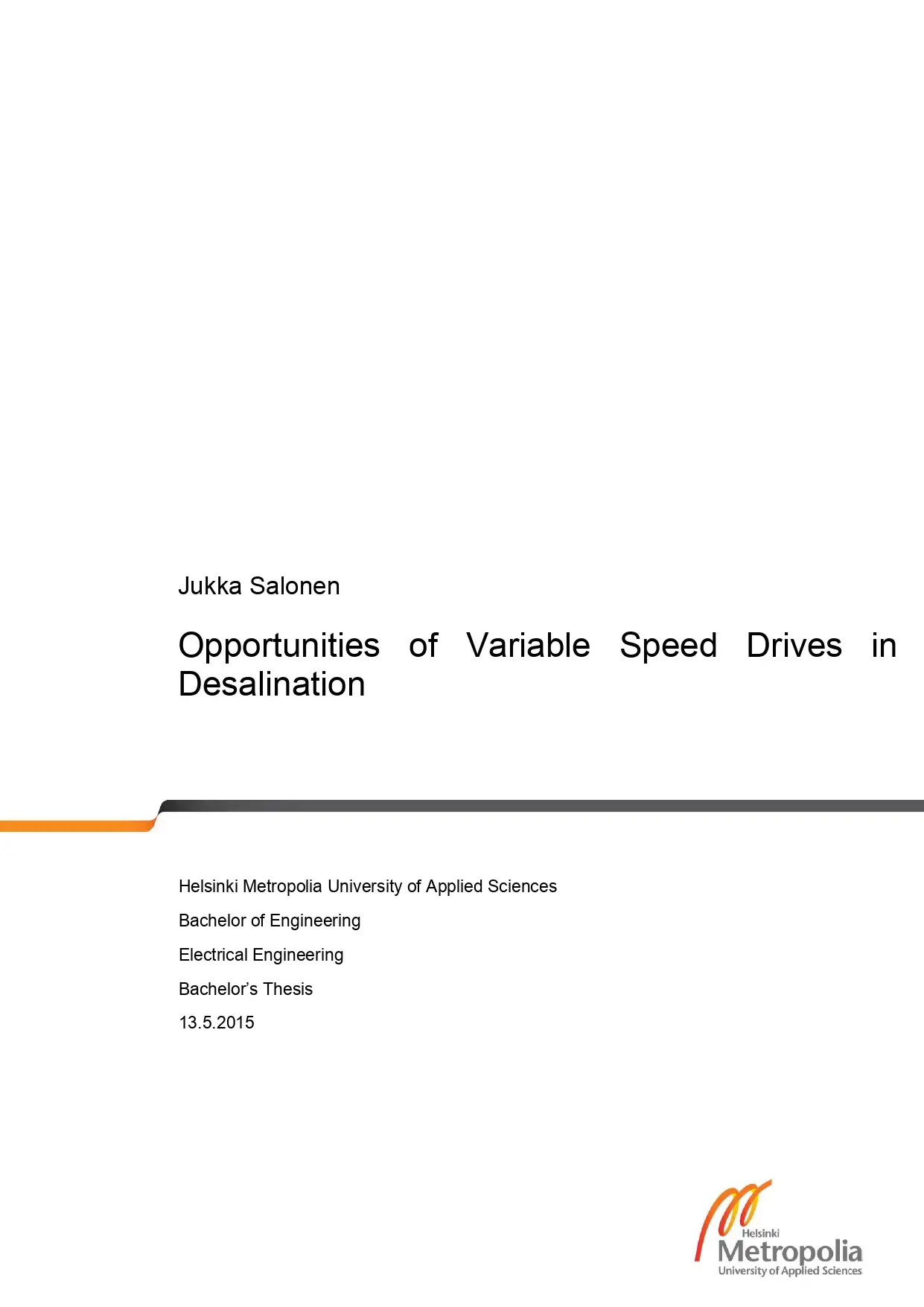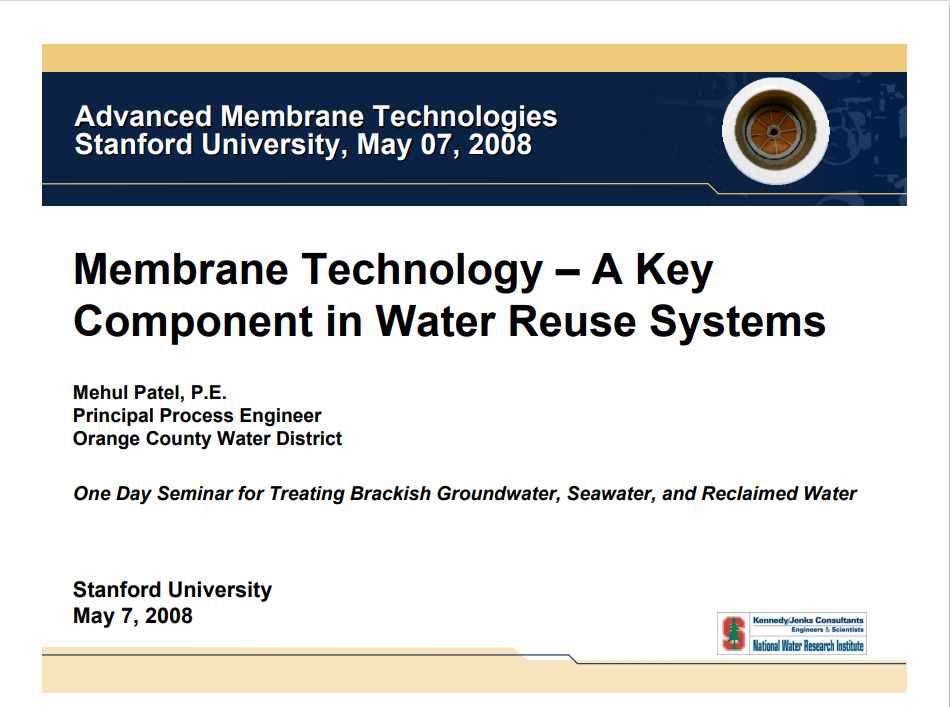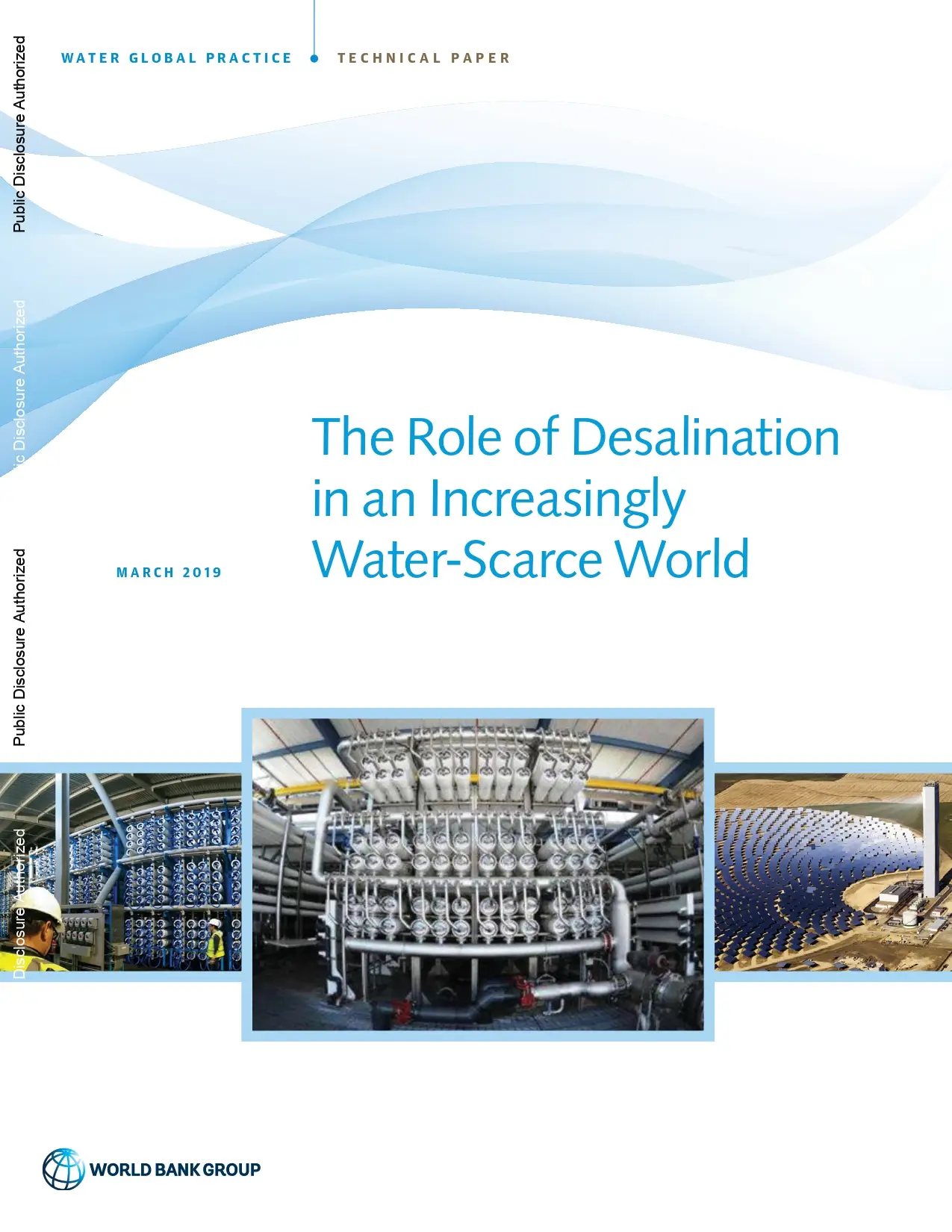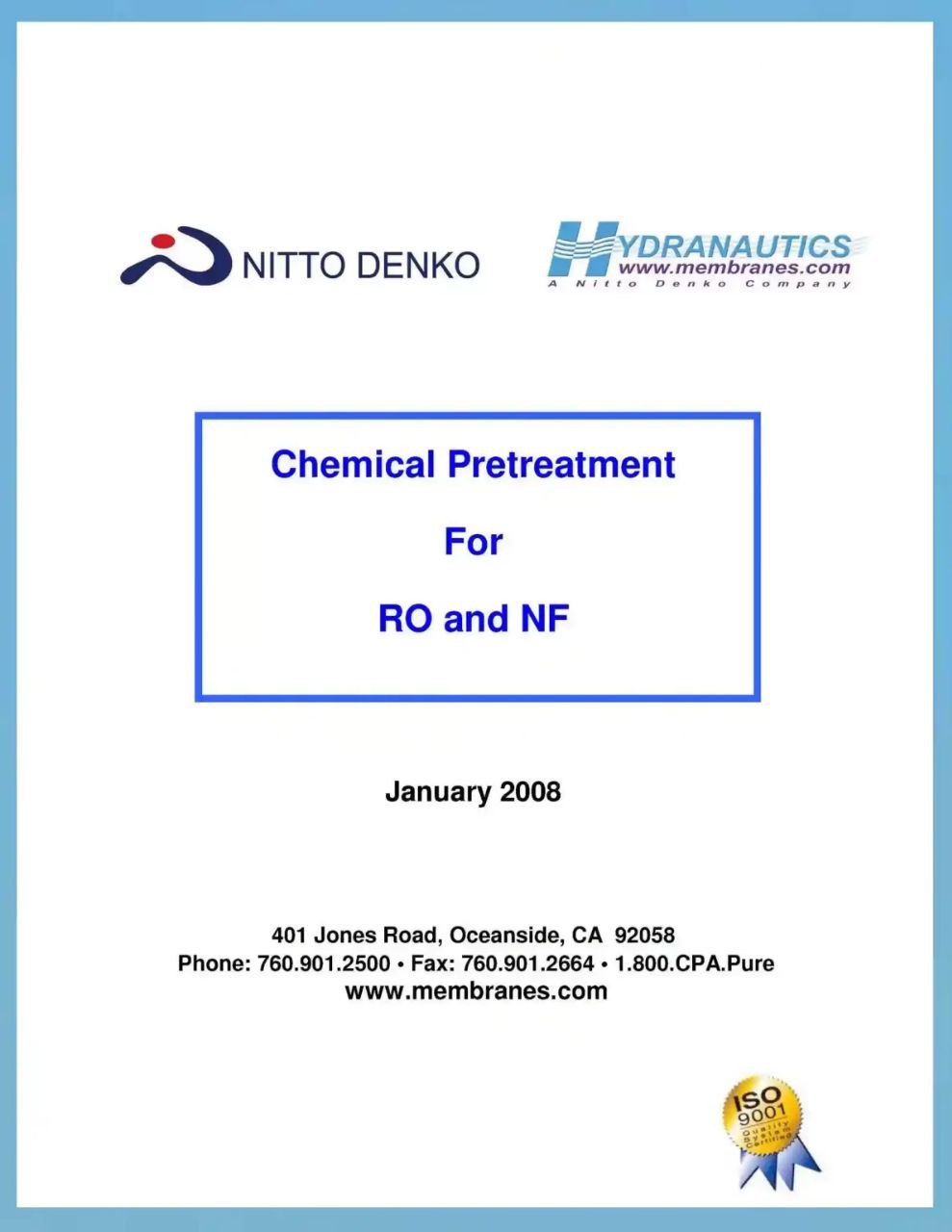Zero Liquid Discharge-Desalination
Achieving strict wastewater treatment regulations and “reducing water usage have become one of the most critical considerations in industry today. Numerous environmental regulations, rigorous permitting processes, and lack of water availability, among other factors, are driving many industrial facilities to implement zero liquid discharge (ZLD) systems as a solution”. Zero Liquid Discharge (ZLD) technologies help to achieve environmental
compliance, reduce carbon footprint, create positive public perception, and recover high purity water for reuse. This source guide is prepared for the Workshop on “Zero Liquid Discharge Desalination” which will be held during October 18-19, 2011 by Water Resources Division at Kuwait Institute for Scientific Research. The guide covers the latest studies conducted on the theme of the workshop. Information in the bibliographic section has been taken from Scopus database.
Zero Liquid Discharge-Desalination
Achieving strict wastewater treatment regulations and “reducing water usage have become one of the most critical considerations in industry today. Numerous environmental regulations, rigorous permitting processes, and lack of water availability, among other factors, are driving many industrial facilities to implement zero liquid discharge (ZLD) systems as a solution”. Zero Liquid Discharge (ZLD) technologies help to achieve environmental
compliance, reduce carbon footprint, create positive public perception, and recover high purity water for reuse. This source guide is prepared for the Workshop on “Zero Liquid Discharge Desalination” which will be held during October 18-19, 2011 by Water Resources Division at Kuwait Institute for Scientific Research. The guide covers the latest studies conducted on the theme of the workshop. Information in the bibliographic section has been taken from Scopus database.
Cost Determination & Designing of Desalination Plant
Water sector is considered to be one of the main sectors which communities development and growth depends on. Specially water plays an important role in the fields of comprehensive development. In addition that water remains to be the first element of life and the element of food, industrial, and economic security. it was necessary to search into the non-traditional sources of water , because of the real case of water in Jordan and the imbalance equation between demand and availability and the high percentage of water deficit where the percentage almost equal 500 million cubic meter yearly. Where non traditional sources includes water desalination and the reuse of waste water. since the desalination of water is the only choice for deficit reduction and use
desalinated water in drinking purposes we had to search in water desalination subject. Where water desalination will be the solution for water deficit.
It’s expected that researches and projects related to water will be the main motivation to accelerate the reliance on desalination and remove the consequences which may cause by the application of desalination projects. And in this project the attention were to the design of treatment plants with high efficiency and low costs.
Cost Determination & Designing of Desalination Plant
Water sector is considered to be one of the main sectors which communities development and growth depends on. Specially water plays an important role in the fields of comprehensive development. In addition that water remains to be the first element of life and the element of food, industrial, and economic security. it was necessary to search into the non-traditional sources of water , because of the real case of water in Jordan and the imbalance equation between demand and availability and the high percentage of water deficit where the percentage almost equal 500 million cubic meter yearly. Where non traditional sources includes water desalination and the reuse of waste water. since the desalination of water is the only choice for deficit reduction and use
desalinated water in drinking purposes we had to search in water desalination subject. Where water desalination will be the solution for water deficit.
It’s expected that researches and projects related to water will be the main motivation to accelerate the reliance on desalination and remove the consequences which may cause by the application of desalination projects. And in this project the attention were to the design of treatment plants with high efficiency and low costs.
Chemical Pretreatment For RO and NF
There are a number of chemicals that can be introduced into the RO feed to enhance the
There are a number of chemicals that can be introduced into the RO feed to enhance the operation of the RO system.
· Acids
· Caustic
· Dechlorination Chemicals
· Antiscalants and Dispersants
Chemical Pretreatment For RO and NF
There are a number of chemicals that can be introduced into the RO feed to enhance the
There are a number of chemicals that can be introduced into the RO feed to enhance the operation of the RO system.
· Acids
· Caustic
· Dechlorination Chemicals
· Antiscalants and Dispersants
Desalination, Trends and Technologies
Preface:
The sustainability and prosperity of the ancient civilizations of China, Egypt, Babylonia, Phoenicia, Persia and Roma were based on the extensive use of water for human consumption, crop irrigation, canal navigation and energy generation. Today, the worldwide scarcity of water and clean energy constitutes a central and critical problem for the whole humankind. This situation is aggravated as industrial, agricultural and municipal effluents reach the water bodies, or the coastal seawater that is used as feed for desalination plants. All these problems are linked to the actual, natural and anthropogenic changes of climate, global warming and greenhouse-gas emissions, all interrelated phenomena that affect our planet. In order to avoid damage to its facilities and equipment, the desalination industry invests considerable efforts to deal with these changes, in particular with extreme events such as torrential rains, devastating FL floods, dry seasons with devouring fifers, as well as with extended spells of cold weather with freezing temperatures. The book chapters are arranged in an hierarchical sequence, starting with conventional and novel desalination processes and following with energy, environmental, economic and ecological issues, all affecting the desalination industry image and profitability. Leading experts from academia and industry, as well as environment researchers, distinguished teachers and experienced engineers have writ en special chapters for this impressive collection. The contributing authors offer a large amount of practical information, presenting it in a highly condensed yet coherent body of useful knowledge and practical expertise. Moreover, the multi-authored characteristic of this volume offers a wide spectrum of knowledge and experience, as the authors are specialists in different fields and express diverse approaches and orientations. The intended multifacet content of this publication certainly contributes to enrich it. This compendium provides valuable, encyclopedic knowledge on research, development, processes, plants and technologies of this industry, from the fundamental concepts up to many practical cases collected from around the world. Hence, it provides a useful insight into the world of water, energy and desalination, easy to follow and to apply. This volume is an essential companion to chemists, as well as to civil and chemical engineers who design, build and operate desalination plants. It is also highly relevant to maintenance personnel, corrosion specialists, material- and mechanical engineers.
Desalination, Trends and Technologies
Preface:
The sustainability and prosperity of the ancient civilizations of China, Egypt, Babylonia, Phoenicia, Persia and Roma were based on the extensive use of water for human consumption, crop irrigation, canal navigation and energy generation. Today, the worldwide scarcity of water and clean energy constitutes a central and critical problem for the whole humankind. This situation is aggravated as industrial, agricultural and municipal effluents reach the water bodies, or the coastal seawater that is used as feed for desalination plants. All these problems are linked to the actual, natural and anthropogenic changes of climate, global warming and greenhouse-gas emissions, all interrelated phenomena that affect our planet. In order to avoid damage to its facilities and equipment, the desalination industry invests considerable efforts to deal with these changes, in particular with extreme events such as torrential rains, devastating FL floods, dry seasons with devouring fifers, as well as with extended spells of cold weather with freezing temperatures. The book chapters are arranged in an hierarchical sequence, starting with conventional and novel desalination processes and following with energy, environmental, economic and ecological issues, all affecting the desalination industry image and profitability. Leading experts from academia and industry, as well as environment researchers, distinguished teachers and experienced engineers have writ en special chapters for this impressive collection. The contributing authors offer a large amount of practical information, presenting it in a highly condensed yet coherent body of useful knowledge and practical expertise. Moreover, the multi-authored characteristic of this volume offers a wide spectrum of knowledge and experience, as the authors are specialists in different fields and express diverse approaches and orientations. The intended multifacet content of this publication certainly contributes to enrich it. This compendium provides valuable, encyclopedic knowledge on research, development, processes, plants and technologies of this industry, from the fundamental concepts up to many practical cases collected from around the world. Hence, it provides a useful insight into the world of water, energy and desalination, easy to follow and to apply. This volume is an essential companion to chemists, as well as to civil and chemical engineers who design, build and operate desalination plants. It is also highly relevant to maintenance personnel, corrosion specialists, material- and mechanical engineers.










